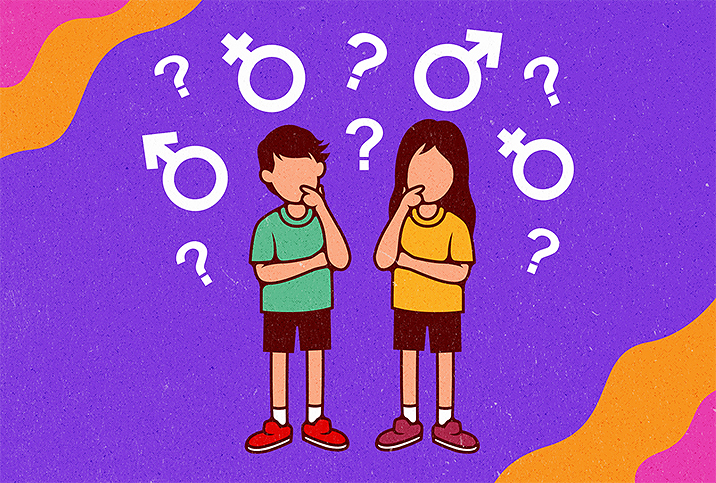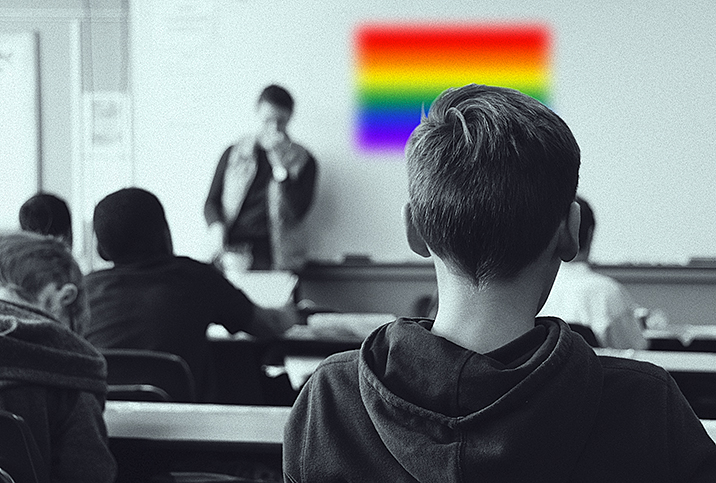STD Education in Schools Could Prove Crucial

The teen birth rate in 2020 was down 8 percent from the previous year and 75 percent from its peak in 1991. The same cannot be said for sexually transmitted diseases (STDs) and sexually transmitted infections (STIs). According to the Centers for Disease Control and Prevention (CDC), 53 percent of the 26 million annual reported cases of STDs were among adolescents and young adults between 15 and 24 years old.
Of the 50 states in the United States, 39 plus Washington, D.C., mandate some form of sex education. While almost every state provides schools with some guidance on how to teach the subject, the approach is far from unified.
Some students are provided with comprehensive sex education; other students are taught abstinence; others to avoid sex until they're married. Very few states insist that these classes need to be based on medically accurate information. Of course, all of this happens amid social and religious pressures and the inevitable influence of sex as portrayed by Hollywood.
Are we preparing our young people to deal adequately with their current and future reproductive and sexual health?
The abstinence approach
According to the Guttmacher Institute, 29 states mandate that sex education courses stress abstinence; 19 states require instruction on the importance of engaging in sexual activity only when married. Twenty states and D.C. mandate sex ed to provide information on contraception, and 17 states and D.C. require inclusion of the negative consequences of teen sex and pregnancy.
A 2016 review published in Health Psychology Review on behalf of the European Health Psychology Society found an abstinence-only curriculum is ineffective in promoting positive changes around sexual behaviors. By contrast, comprehensive interventions, especially those focused on the prevention of HIV, improved knowledge and attitudes, behaviors and general health outcomes. The overall conclusion of the review was that "school-based interventions targeting risky sexual behavior can be effective."
Additionally, a study using data from the National Longitudinal Study of Adolescent Health looked at the effectiveness of virginity pledges against the proliferation of STDs. It indicated that among adolescents who pledged a commitment of abstinence until marriage, STD rates were no different from those who did not pledge. The study theorized that potentially, pledgers were less likely to use condoms or barriers the first time they had sex and less likely to receive STD testing or diagnosis.
In many ways, the effectiveness of sex education is only as good as the information presented, and in what context. According to Guttmacher's data as of August 2022, 17 of 50 states require school sex ed programs to be medically accurate. Three states go as far as to mandate only negative information be provided on homosexuality and/or a positive emphasis be put on heterosexuality.
A total of 35 states plus D.C. have an opt-out decision for parents who don't want their child's scholastic career to include sex education. Research shows only half of young adults in the U.S. are receiving education deemed more than the minimum standards. In some places, it's been reported that 30 percent of teenage males don't receive any sex education before they have intercourse for the first time.
Prevention and protection
Experts believe abstinence-only sex ed can instill shame in students around sexual activity. While proponents see this as a deterrent against intercourse, sex ed activists disagree.
Michelle Slaybaugh, director of social impact and strategic communications for SIECUS: Sex Ed for Social Change, explained that feeling shame for having sex could lead students to not access testing or treatment services for STIs and STDs. Shame about sex can lead to long-term guilt, which can impact intimacy later in life.
Shame can impact how likely someone is to start a conversation with a partner about sexual health history and testing, which can also contribute to higher STI and STD rates, Slaybaugh noted. Untreated STIs and STDs can create lifelong health implications.
Misinformation about transmission and treatment can increase stigma associated with STDs such as genital herpes, HIV and HPV, causing anxiety and depression, Slaybaugh continued. When sex is taught as shameful, information on prevention and protection is much less likely to be shared.
Tactics of fear and shame can backfire
"Fear-based tactics in any public health awareness campaign, including educating about sexual health, have been shown to be generally less effective," Slaybaugh explained, citing anti-smoking campaigns as an example. "They may also have the opposite effect in lowering any sort of 'risk behavior.'"
"Abstinence-only sex education often uses scare tactics, which have never shown to be effective," said Nora Gelperin, M.Ed., director of sex education and training at Advocates for Youth, based in Washington, D.C. "Some of these scare tactics can include graphic images of genitals with STIs, which can often backfire since one of the most common symptoms of an STI is having no symptoms at all."
Graphic images of infected genitals create an unrealistic portrayal of most STDs. The messaging a teen or young adult might take away from these images is "you'll know it when you see it," when that's often not the case at all.
"The reality is that those images are often the most extreme, untreated cases of STIs, which are not what most people experience and can lead young people to assume that only if their genitals look as it does in the picture do they have an STI," Gelperin said.
Analogies can be harmful
Educators may use any number of analogies to promote abstinence-only teachings. One such analogy, Gelperin explained, is that you're like a piece of sticky tape when you first have sex with someone. The tape is then passed around the class for students to test the stickiness until the last person finds it's no longer sticky. As taught, it's often prefaced that the tape represents a young woman having sex out of wedlock.
Students may also be offered, in reality or hypothetically, a piece of gum that's already been chewed. Upon their disgust, it's explained that if they wouldn't want to chew something already chewed, they also wouldn't want a sexual partner who has already had sex.
There are also verbal warnings about abstinence being the best strategy for your sexual health, for example, "The more partners you have, the dirtier you are, and threats that if you do not want HIV or an STI, you should not have sex," Slaybaugh said.
Abstinence-only sex ed may disproportionately impact women who are taught their value is tied to their virginity.
This messaging can be particularly harmful to survivors of sexual assault or incest, Gelperin noted. Slaybaugh added that this curriculum may further silence survivors.
Abstinence-only sex ed may disproportionately impact women who are taught their value is tied to their virginity.
"Additionally, scare tactics exaggerate the consequences of behavioral choices, reinforce harmful gender-role stereotypes, don't include information about STI prevention for people who are LGBTQ+ and often focus on the failure rates of contraception instead of teaching youth the skills to protect themselves now and into the future," Gelperin said.
"Sex education works to help young people delay the onset of sexual activity, decrease the number of sexual partners they have and increase the use of effective contraception," she continued. "Additionally, the overwhelming majority of parents in America want their kids to receive sex education from trained educators in schools and communities on a wide range of topics, including consent, sexual orientation, healthy relationships, etcetera.
"We need to provide young people with the information, skills and resources they need and deserve if we expect them to make healthy choices for themselves now and into the future," Gelperin concluded.


















